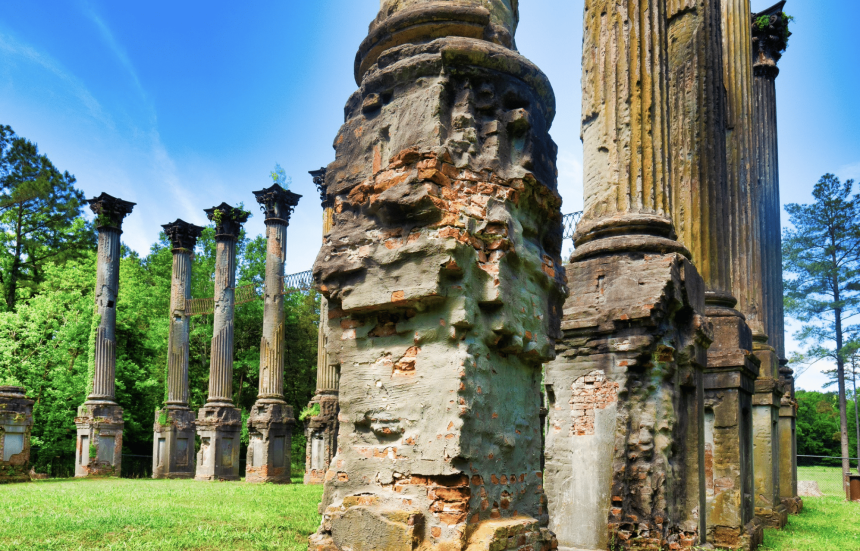One of Mississippi’s most recognizable landmarks has received a facelift aimed at preservation and stabilization of the site.
Windsor Ruins, what’s left of the largest antebellum mansion ever built in the state, now has a new walking trail and signs that tell the stories of plantation owners and the people who were enslaved there. The project was completed by the Mississippi Department of Archives and History.
“Windsor Ruins is one of those iconic Mississippi places that has fascinated people for more than 100 years,” MDAH director Katie Blount said. “This stabilization project has helped to preserve this site’s structure and history, providing a larger narrative to be shared with future generations.”
Listed in the National Register of Historic Places, Windsor Ruins is in Claiborne County and draws thousands of visitors from across the state and nation annually. The remains – 23 enormous, full columns and five partial columns – are from an 1890 fire that took out the mansion.
RELATED: Windsor Ruins voted as one of most breathtaking views in U.S.
Windsor, completed in 1861, was designed by David Shroder of Maryland and built by artisans, carpenters, and enslaved laborers. According to MDAH, the mansion was at the heart of an extensive cotton plantation of 2,500 acres with a workforce of over 300 enslaved people. The area was a hub for cotton, producing thousands of bales for export through New Orleans to markets in New England and the U.K.
Near Windsor is where Union soldiers landed to begin their ultimately successful overland campaign to take Vicksburg and control the entire Mississippi River during the Civil War. At least 17 men who had been enslaved at Windsor joined companies of the United States Colored Troops.
In 1974, MDAH began its oversight of Windsor after its donation by the Magruder family. While the columns remained in stable condition for many years, weather and other damage required professional conservation efforts. In 2016, MDAH began a significant effort to stabilize the columns. This project included stabilizing the masonry and stucco for all the columns by installing anchors to bond materials together, reconstructing missing brickwork, repointing deteriorated joints in the plinths, and injecting conservation mortar. The project was completed in 2024.
While the columns are what’s left of Windsor, four iron staircases survived the fire. Three went missing in the years after, and the fourth was relocated to Alcorn State University where it serves as the entrance to Oakland Memorial Chapel on campus at the HBCU.








